#Skylab IV
Text

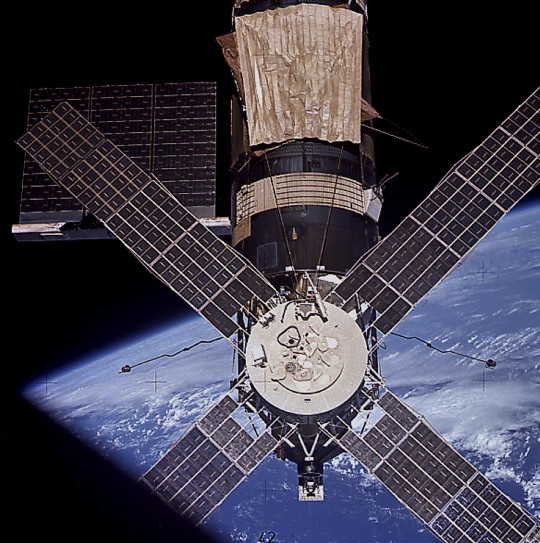

The final view of Skylab, from the departing SL-4 after 84 days in the orbiting laboratory.
"An overhead view of the Skylab space station cluster in Earth orbit as photographed from the Skylab 4 Command and Service Modules (CSM-118) during the final fly-around by the CSM before returning home. The space station is contrasted against a cloud-covered Earth.
Note: the solar shield which was deployed by the second crew of Skylab and from which a micrometeoroid shield has been missing since the cluster was launched on May 14, 1973. The OWS solar panel on the left side was also lost on the workshop's launch day."
Date: February 8, 1974
NASA ID: 7449819, 7449835, SL4-143-4707, SL4-143-4706, 7449862
#Skylab OWS#Skylab#Space Station#Skylab IV#Skylab 4#SL-4#SLM-3#CSM-118#NASA#Apollo Program#Apollo Applications Program#space#Earth#February#1974#my post
110 notes
·
View notes
Text
Ryu Number: Owen Garriott
Owen Garriott was an American astronaut who spent approximately two months in Skylab 3, taking—at the time—the shared world record for longest spaceflight (it'd be broken less than half a year later, but that's still awesome). More relevantly for us (i.e. those of us interested in Ryu Numbers), he was the father of Richard Garriott, the creator of the Ultima game series, so it's no surprise that the latter stuck a cameo of the former in Ultima II: The Revenge of the Enchantress:
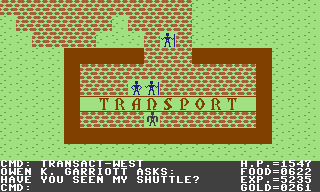
That's the finish line. The problem, as always, is getting there.
It's generally accepted that each Ultima game features the same individual as protagonist—that is, that the same repeat isekaiee stars in each major installment of the series. Assuming that this is true, and that this protagonist—referred to by lore as "The Stranger" or "The Avatar"—is the same dude whichever game they're in, Owen Garriott has a Ryu Number of at most 4.
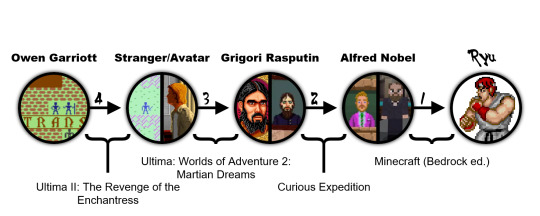
That said, early installments of the Ultima series were a bit iffy on whether the protagonist was the same individual game to game, so maybe you're iffy, too. Fair enough! You can still get a Ryu Number of at most 4 for Owen Garriott following an alternate route.

Apologies if you're learning it just now, but there's a fighting game where you can have Santa Claus and the Buddha duke it out. It's on Steam. Jesus is there, too, but Santa Claus seemed funnier.
Oh, and apparently the Buddha is in some versions of Ultima IV. You know he's the Buddha because when you talk to him he says, "I am Buddha," and says stuff at you from the Dharmapada. Which may seem odd, but if I had a list of historical or public domain individuals I wouldn't be too surprised by seeing after getting isekaied to another world, the Buddha would be up there. That's so Buddha!
"But my guy," says the imaginary version of you I've built up in my head without actually knowing you, "'Buddha' is a title. This Britannian dude could be any old Buddha! The Theravadas acknowledge twenty-nine of them, and they're on the stingy end!"
To which I say: Come on, my dude, you know that whenever anyone west of the prime meridian says "Buddha" they're talking about Gautama. Are you really gonna make me do this?
Fine.

Yes, Short Round is also in Ultima IV.

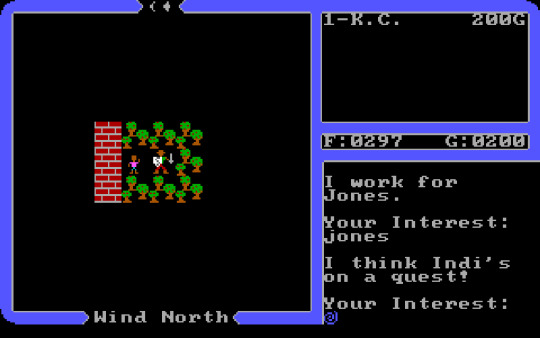
(Bonus: Non-Minecraft routes:)
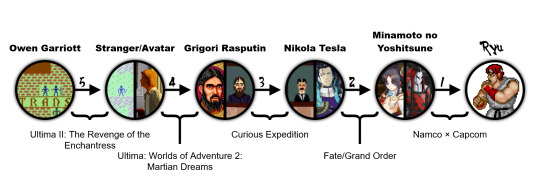
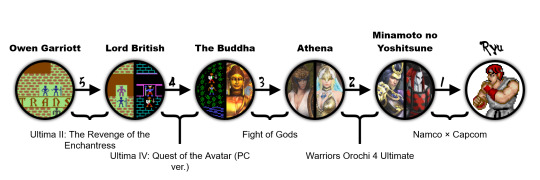

#ryu number#owen garriott#ryu#minecraft#minecraft (bedrock ed.)#alfred nobel#curious expedition#grigori rasputin#ultima: worlds of adventure 2: martian dreams#stranger#avatar#ultima ii: the revenge of the enchantress#santa claus#fight of gods#the buddha#buddha#ultima iv: quest of the avatar#ultima iv: quest of the avatar (pc ver.)#lord british#luke skywalker#lego star wars: the complete saga#indiana jones#lego indiana jones: the original adventures#short round#namco x capcom#minamoto no yoshitsune#fate/grand order#nikola tesla#warriors orochi 4#warriors orochi 4 ultimate
5 notes
·
View notes
Note
hey! im not that well versed on all things space bc it's a relatively new interest of mine. how come ive seen so many blogs post about not wanting the other nasa logo? you totally don't have to answer, i just saw that you reblogged a post about it :) hope you have a good day!
By the other NASA logo do you mean the worm or the wormball?
And to answer your question, I’m think the logo arguments are pretty much entirely aesthetic. Some people think the worm is dated and ugly, other people love how sleek it looks. Some people think the wormball is a good compromise, others think the aesthetics are clashy (I’m in that boat.)
For reference, here’s some NASA logos. The ones under the cut are a little rare and honestly you don’t have to care about them, they just look cool.
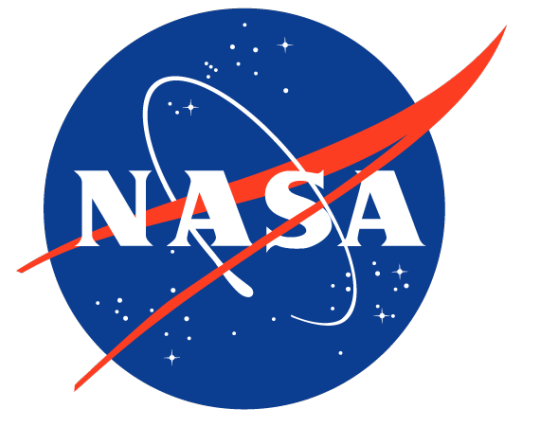
This is the meatball. It’s the original from the 60′s and it’s still in use today. Detailed yet clean. Gorgeous. The swoosh is a tie in with the aero side of NASA and the stars and orbit with space. The serif lettering manages to look classy rather than dated. Even if this isn’t your preferred logo, you have to respect how it’s got the perfect amount of detail to look interesting while also being ca clean design.
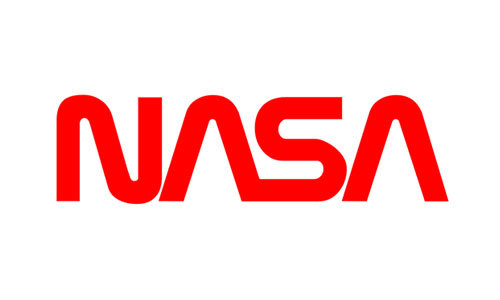
This is the worm. It was an attempt to modernize the logo around the start of the Shuttle/Skylab era. If this was for any other agency, I admit the worm styling would be a little dated. But personally, I think this logo brings back some of the enthusiasm of the early Shuttle era, just like the meatball brings back the energy of the Apollo era. It’s striking, it’s recognizable, and it’s one of my favorite worm stylings. (Compare it to SF MUNI’s worm logo, which was so cluttered I, as a local, didn’t notice it said “muni” until I was a teenager.)

This is the wormball. (Wikimedia was giving me trouble so it’s just a transparent background; I actually don’t have this one saved on my laptop for personal aesthetic reasons lmao.) Some people love it, but you will never convince me to. 100% personal preference, though, so if you love it, that’s fine, just keep it away from me. It’s like pineapple on pizza; you either love it or you hate it, but you’ve definitely got a strong enough opinion to argue about it.

This is NASA’s seal. You’ll only ever see it on official documents and things like that. It’s not something that’s displayed very commonly on, say, the wall of a NASA facility, and even less commonly on spacecraft. I believe this has been in use since the creation of the agency.
And, last but not least, I’d like to leave you with how the insignia is displayed on NASA aircraft, because they all. Look. Sick.

When they display the meatball on the rudder of an aircraft, like on SOFIA here, they omit the meatball and stars and display it like this! It looks cool as hell and it looks even better on aircraft where the rudder frames it nicer. (While I was searching around I saw a mockup for a meatballess wormball and it didn’t look awful.) Maybe we should call this the vegan meatball?
It’s also displayed like this on aircraft that were associated with NASA/USAF’s hypersonic research program in the early 60′s. Some pilots from this program went on to become astronauts.
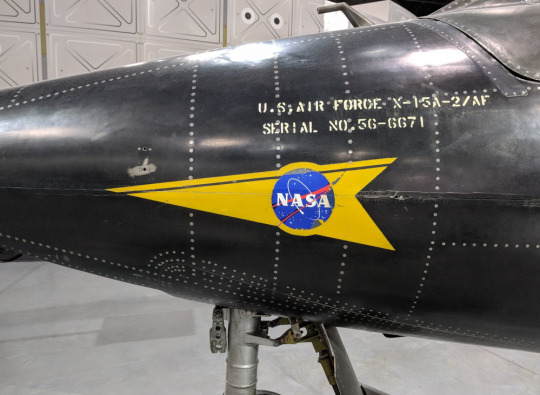
... Including Neil armstrong who flew the X-15 above.
Aircraft from that program also featured a pretty neat rudder: it has this yellow stripe with NASA in a serif font that's unique to this design, as far as I know.
The first photo is Neil's X-15 again, the other is Dick Scobee's X-24B.

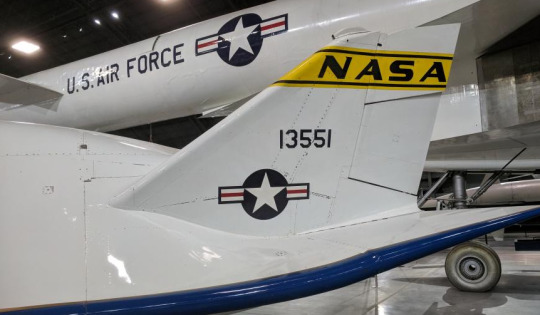
Lastly, the worm was plastered unedited onto aircraft during the worm era. It didn't always look good, but it looked too sexy on the X-29 to not include a pic.

(All photos are mine from NMUSAF!)
23 notes
·
View notes
Text
Damn, made me cry 😭
#sad #music #brazil #brasil #spotify #song
4 notes
·
View notes
Text
Spaceflown wristwatches
NASA missions 1962 to 1982
Mercury program
1962 MA-6 Friendship-7
John Glenn wore a Heuer 2915 stopwatch strapped on his right forearm
1962 MA-7 Aurora-7
Scott Carpenter wore a Breitling Navitimer Cosmonaute chronograph with 24 hours dial at left wrist (L)
1962 MA-8 Sigma-7
Walter Schirra wore his personal Omega Speedmaster CK2998-4 on his left wrist (L)
1963 MA-9 Faith-7
Gordon Cooper wore his personal Omega Speedmaster CK2998-4 on left (L) & his Accutron Astronaut watch at right wrist
Gemini program
1965 Gemini III
Gus Grissom L= Speedmaster R= Accutron Astronaut
John Young L= Accutron Astronaut R= Speedmaster
1965 Gemini IV
Ed White L= two Speedmaster 105.003-64
Jim McDivitt L= Speedmaster + R= Speedmaster
1965 Gemini V
Gordon Cooper L= Speedmaster + R = Accutron Astronaut
Pete Conrad L= Speedmaster + R= Speedmaster & Glycine Airman
1965 Gemini VII
Frank Borman L= Speedmaster
James Lovell R= Speedmaster
1965 Gemini VI
Walter Schirra L= Speedmaster
Tom Stafford L= Speedmaster R= Speedmaster
1966 Gemini VIII
Neil Armstrong L= Speedmaster + R= Longines Wittnauer Weems
David Scott L= Speedmaster
1966 Gemini IX
Tom Stafford L= Speedmaster
Eugene Cernan L= Speedmaster
1966 Gemini X
John Young L= Speedmaster
Michael Collins none ? ( R= Speedmaster underneath spacesuit )
1966 Gemini XI
Pete Conrad L= Speedmaster + R= Glycine Airman
Richard Gordon R= Speedmaster
1966 Gemini XII
James Lovell R= Speedmaster
Edwin Aldrin R= Speedmaster
Apollo program
1967 Apollo 1
Gus Grissom , Edward White , Roger Chaffee L= Speedmaster
1968 Apollo 7
Walter Schirra L= Speedmaster
Donn Eisele L= Speedmaster R= Speedmaster
Walter Cunningham L= Speedmaster
1968 Apollo 8
Frank Borman L= Speedmaster
James Lovell R= Speedmaster
William Anders L= Speedmaster
1969 Apollo 9
Jim McDivitt , David Scott , Russell Schweickaert L= Speedmaster
1969 Apollo 10
Tom Stafford L= Speedmaster
John Young L= Speedmaster ( L underneath spacesuit Speedmaster on JB Champion )
Eugene Cernan L= Speedmaster ( L underneath spacesuit Speedmaster on JB Champion )
1969 Apollo 11
Neil Armstrong R= Speedmaster
Edwin Aldrin L= Speedmaster
Michael Collins R = Speedmaster
1969 Apollo 12
Pete Conrad L= Speedmaster
Alan Bean L= Speedmaster
Richard Gordon L= Speedmaster ( R underneath spacesuit Speedmaster on JB Champion )
1970 Apollo 13
James Lovell R= Speedmaster
Fred Haise L= Speedmaster
Jack Swigert L= Speedmaster ( L underneath spacesuit Rolex GMT-master 1675 Pepsi )
1971 Apollo 14
Alan Shepard L= Speedmaster
Edgar Mitchell L= Speedmaster ( L + R underneath spacesuit Rolex GMT-master 1675 + 1675/3 )
Stu Roosa L= Speedmaster ( L underneath spacesuit Speedmaster on JB Champion ) + Rolex GMT-master 1675 Pepsi in PPK
1971 Apollo 15
David Scott L= Speedmaster ( PPK contained Bulova 88510 chronograph worn on the Moon )
James Irwin L = Speedmaster
Alfred Worden L= Speedmaster
1972 Apollo 16
John Young L= Speedmaster
Charles Duke L= Speedmaster ( L underneath spacesuit Speedmaster )
Thomas Mattingly L= Speedmaster
1972 Apollo 17
Eugene Cernan L= Speedmaster ( L underneath spacesuit Speedmaster on JB Champion
Harrison Schmitt L= Speedmaster
Ron Evans L= Speedmaster ( L underneath spacesuit personal Speedmaster 145.022 ) ( PPK contained Rolex GMT-master Pepsi 1675 carried to Moon)
Skylab program
1973 Skylab-2
Pete Conrad, Joseph Kerwin, Paul Weitz L= Speedmaster
1973 Skylab-3
Alan Bean L= Speedmaster
Owen Garriott L= Speedmaster
( PPK contained Seiko wristwatches )
Jack Lousma L= Speedmaster ( L underneath spacesuit 2nd Speedmaster )
1973 Skylab-4
Gerald Carr L= Speedmaster ( 2nd watch in PPK = Movado Datron automatic chronograph )
Edward Gibson L= Speedmaster( L underneath spacesuit 2nd Speedmaster – Mk II ? )
William Pogue L= Speedmaster
L underneath spacesuit Seiko 6139-6005 first automatic chronograph in space
Apollo-Soyuz Test Project 1975 ASTP
Thomas Stafford R= Speedmaster ( L underneath spacesuit 2nd Speedmaster)
Deke Slayton L= Speedmaster ( L underneath spacesuit 2nd Speedmaster)
Vance Brand L= Speedmaster ( L underneath spacesuit 2nd Speedmaster)
Alexei Leonov L= Speedmaster ( L underneath spacesuit 2nd Speedmaster) + 3rd Speedy
Valeri Kubasov L= Speedmaster ( L underneath spacesuit 2nd Speedmaster)
#Apollo#Astronaut#Aviator#Jetpilot#Testpilot#montres#Speedmaster#Movado#Seiko#Glycine#GlycineAirman#Rolex#RolexGMT#GMTmaster#Accutron#Bulova#321#861#cosmonaut#Skylab#Mercury#Gemini#ASE#moonwatch#moonwatchuniverse#spacewatches#NASA#USAF#military#USMAC
7 notes
·
View notes
Photo

Em comemoração aos 50 anos do homem a Lua, todas as viajens tripuladas da Apollo! . Apollo 7 (Walter Schirra, Donn Eisele e Walter Cunningham) - decolagem em 11 de outubro de 1968 - primeira missão Apollo tripulada, usou o foguete Saturno IB . Apollo 8 (Frank Borman, James Lovell e William Anders) - dezembro de 1968 - orbitou a Lua na noite de Natal . Apollo 9 (James McDivitt, David Scott e Russell Schweikart) - março de 1969 - testes do Módulo Lunar em órbita da Terra . Apollo 10 (Tom Stafford, John Young e Eugene Cernan) - maio de 1969 - testes do Módulo Lunar em órbita da Lua . Apollo 11 (Neil A. Armstrong, Michael Collins e Edwin E. "Buzz" Aldrin) - decolagem em 16 de julho de 1969, pouso na Lua em 20 de julho de 1969, retorno a Terra em 24 de julho de 1969 - primeiros homens a caminhar na Lua . Apollo 12 (Charles Conrad, Richard Gordon e Alan Bean) - novembro de 1969 - recolheu partes da sonda "Surveyor 3" . Apollo 13 (James Lovell, Fred Haise e John Sweigert) - abril de 1970 - um acidente impediu o pouso na Lua . Apollo 14 (Alan Shepard, Stuart Roosa e Edgar Mitchell) - fevereiro de 1971 - experimentos científicos . Apollo 15 (David Scott, James Irwin e Alfred Worden) - julho de 1971 - uso do rover lunar . Apollo 16 (John Young, Thomas Mattingly e Charles Duke, Jr.) - abril de 1972 - ficou 3 dias na superfície da Lua . Apollo 17 (Eugene Cernan, Ronald Evans e Harrison Schmitt) - dezembro de 1972 - último voo do projeto Apollo para a Lua . Skylab II, III e IV - três missões que usaram a nave Apollo para trabalhar com a estação espacial Skylab (todas as três usaram o foguete Saturno IB) . Apollo-Soyuz ou Apollo 18 (Tom Stafford, Vance Brand e Donald Slayton) - julho de 1975 - acoplou em órbita da Terra com a Soyuz 19 da URSS (foi usado o foguete Saturni IB) ➖➖➖➖➖➖➖➖➖➖➖➖➖➖➖➖➖ 🚀Marque seus amigos, e sigam o @universo.genial ➖➖➖➖➖➖➖➖➖➖➖➖➖➖➖➖➖ #universogenial #ciencia #astronomia #fisica #quimica #biologia #personalidades #curiosidades #universo #cosmos #vida #astrofisica #genial #astronauta #nasa #cosmologis #vocesabia #leia #livro #facebook #instagram #twitter #tumblr #science #astronomy #sorteios #correnteastronomica #live #followme #sigame ➖➖➖➖➖➖➖➖➖➖➖➖➖➖ https://www.instagram.com/p/B0I7I-ED0MC/?igshid=e4zq3zd94kih
#universogenial#ciencia#astronomia#fisica#quimica#biologia#personalidades#curiosidades#universo#cosmos#vida#astrofisica#genial#astronauta#nasa#cosmologis#vocesabia#leia#livro#facebook#instagram#twitter#tumblr#science#astronomy#sorteios#correnteastronomica#live#followme#sigame
2 notes
·
View notes
Text
Solar System: 10 Things to Know This Week
Rockets We Love-Saturn V
Fifty years ago, with President Kennedy’s Moon landing deadline looming, the powerful Saturn V had to perform. And perform it did—hurling 24 humans to the Moon.
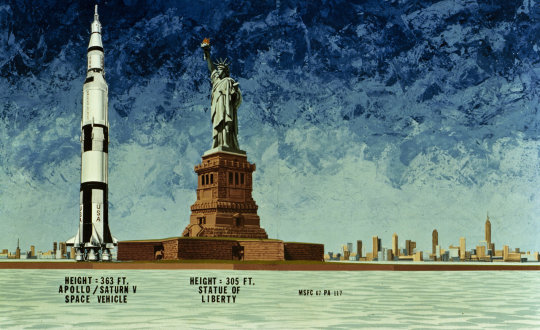
The race to land astronauts on the Moon was getting tense 50 years ago this week. Apollo 6, the final uncrewed test flight of America’s powerful Moon rocket, launched on April 4, 1968. Several technical issues made for a less-than-perfect launch, but the test flight nonetheless convinced NASA managers that the rocket was up to the task of carrying humans. Less than two years remained to achieve President John F. Kennedy’s goal to put humans on the Moon before the decade was out, meaning the Saturn V rocket had to perform.
1—“The only chance to get to the Moon before the end of 1969.”

After the April 1968 Apollo 6 test flight (pictured above), the words of Deke Slayton (one of the original Mercury 7 astronauts) and intense competition with a rival team in the Soviet Union propelled a 12-member panel to unanimously vote for a Christmas 1968 crewed mission to orbit the Moon.
2—Four Hundred Elephants...

The Saturn V rocket stood about the height of a 36-story-tall building, and 60 feet (18 meters) taller than the Statue of Liberty. Fully fueled for liftoff, the Saturn V weighed 6.2 million pounds (2.8 million kilograms), or the weight of about 400 elephants.
3—...and Busloads of Thrust
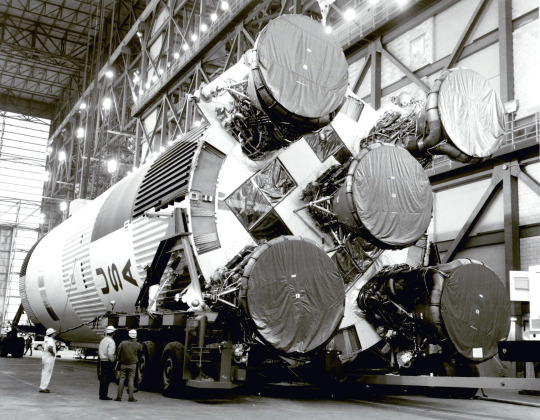
Stand back, Ms. Frizzle. The Saturn V generated 7.6 million pounds (34.5 million newtons) of thrust at launch, creating more power than 85 Hoover Dams. It could launch about 130 tons (118,000 kilograms) into Earth orbit. That's about as much weight as 10 school buses. The Saturn V could launch about 50 tons (43,500 kilograms) to the Moon. That's about the same as four school buses.
4—Christmas at the Moon
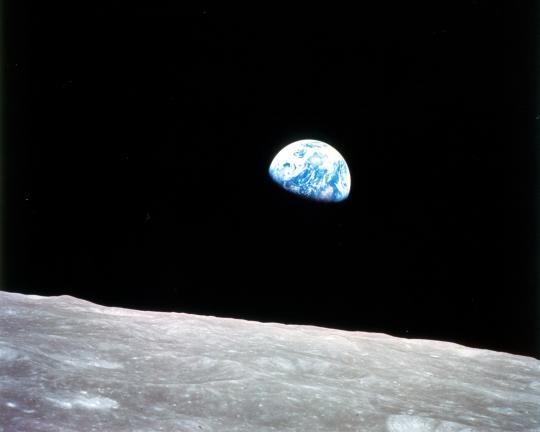
On Christmas Eve 1968, the Saturn V delivered on engineers’ promises by hurling Frank Borman, Jim Lovell and Bill Anders into lunar orbit. The trio became the first human beings to orbit another world. The Apollo 8 crew broadcast a special holiday greeting from lunar orbit and also snapped the iconic earthrise image of our home planet rising over the lunar landscape.
5—Gumdrop and Spider
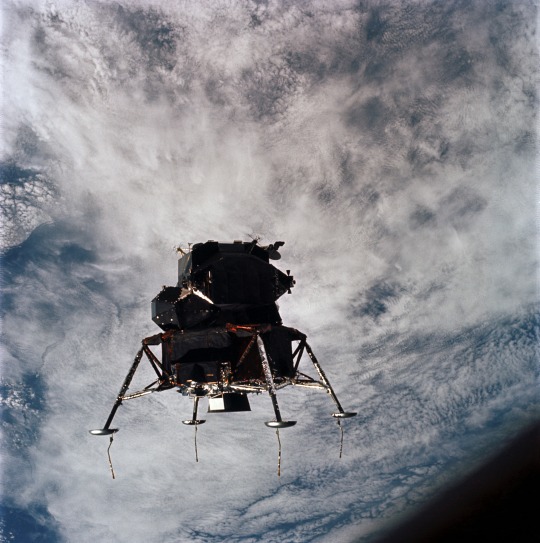
The crew of Apollo 9 proved that they could pull the lunar module out of the top of the Saturn V’s third stage and maneuver it in space (in this case high above Earth). The crew named their command module “Gumdrop.” The Lunar Module was named “Spider.”
6—The Whole Enchilada

Saturn-V AS-505 provided the ride for the second dry run to the Moon in 1969. Tom Stafford, Gene Cernan and John Young rode Command Module “Charlie Brown” to lunar orbit and then took Lunar Module “Snoopy” on a test run in lunar orbit. Apollo 10 did everything but land on the Moon, setting the stage for the main event a few months later. Young and Cernan returned to walk on the Moon aboard Apollo 16 and 17 respectively. Cernan, who died in 2017, was the last human being (so far) to set foot on the Moon.
7—The Main Event
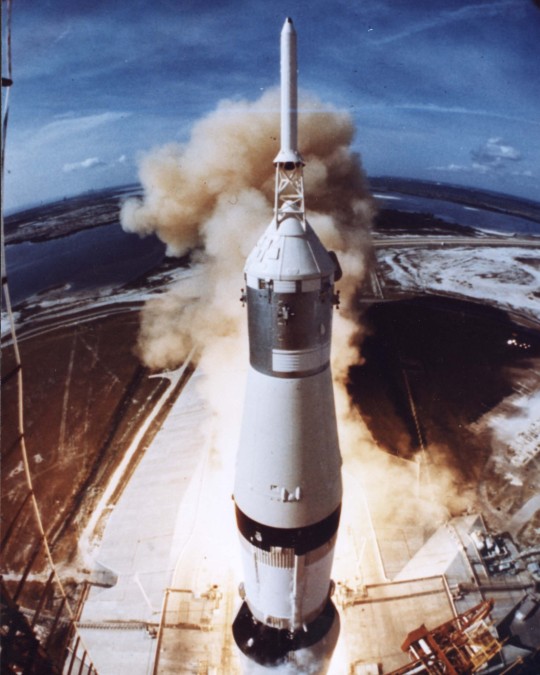
The launch of Apollo 11—the first mission to land humans on the Moon—provided another iconic visual as Saturn-V AS-506 roared to life on Launch Pad 39A at Kennedy Space Center in Florida. Three days later, Neil Armstrong and Buzz Aldrin made the first of many bootprints in the lunar dust (supported from orbit by Michael Collins).
8—Moon Men

Saturn V rockets carried 24 humans to the Moon, and 12 of them walked on its surface between 1969 and 1972. Thirteen are still alive today. The youngest, all in their early 80s, are moonwalkers Charles Duke (Apollo 16) and Harrison Schmitt (Apollo 17) and Command Module Pilot Ken Mattingly (Apollo 16, and also one of the heroes who helped rescue Apollo 13). There is no single image of all the humans who have visited the Moon.
9—The Flexible Saturn V
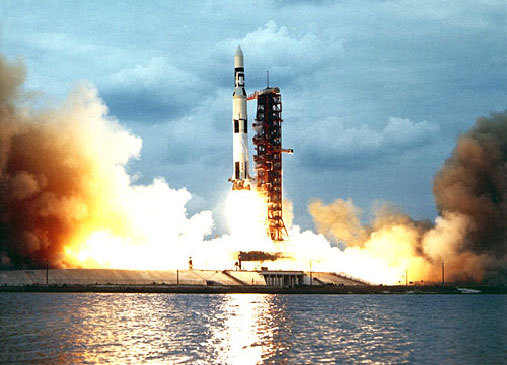
The Saturn V’s swan song was to lay the groundwork for establishing a permanent human presence in space. Skylab, launched into Earth orbit in 1973, was America’s first space station, a precursor to the current International Space Station. Skylab’s ride to orbit was a Saturn IV-B 3rd stage, launched by a Saturn 1-C and SII Saturn V stages.
This was the last launch of a Saturn V, but you can still see the three remaining giant rockets at the visitor centers at Johnson Space Center in Texas and Kennedy Space Center in Florida and at the United States Space and Rocket Center in Alabama (near Marshall Space Flight Center, one of the birthplaces of the Saturn V).
10—The Next Generation

The Saturn V was retired in 1973. Work is now underway on a fleet of rockets. We are planning an uncrewed flight test of Space Launch System (SLS) rocket to travel beyond the Moon called Exploration Mission-1 (EM-1). “This is a mission that truly will do what hasn’t been done and learn what isn’t known,” said Mike Sarafin, EM-1 mission manager at NASA Headquarters in Washington.
Read the web version of this 10 Things to Know article HERE.
Make sure to follow us on Tumblr for your regular dose of space: http://nasa.tumblr.com
2K notes
·
View notes
Text
Events 7.11
472 – After being besieged in Rome by his own generals, Western Roman Emperor Anthemius is captured in St. Peter's Basilica and put to death.
813 – Byzantine emperor Michael I, under threat by conspiracies, abdicates in favor of his general Leo the Armenian, and becomes a monk (under the name Athanasius).
911 – Signing of the Treaty of Saint-Clair-sur-Epte between Charles the Simple and Rollo of Normandy.
1174 – Baldwin IV, 13, becomes King of Jerusalem, with Raymond III, Count of Tripoli as regent and William of Tyre as chancellor.
1302 – Battle of the Golden Spurs (Guldensporenslag in Dutch): A coalition around the Flemish cities defeats the king of France's royal army.
1346 – Charles IV, Count of Luxembourg and King of Bohemia, is elected King of the Romans.
1405 – Ming admiral Zheng He sets sail to explore the world for the first time.
1410 – Ottoman Interregnum: Süleyman Çelebi defeats his brother Musa Çelebi outside the Ottoman capital, Edirne.
1476 – Giuliano della Rovere is appointed bishop of Coutances.
1576 – While exploring the North Atlantic Ocean in an attempt to find the Northwest Passage, Martin Frobisher sights Greenland, mistaking it for the hypothesized (but non-existent) island of "Frisland".
1616 – Samuel de Champlain returns to Quebec.
1735 – Mathematical calculations suggest that it is on this day that dwarf planet Pluto moved inside the orbit of Neptune for the last time before 1979.
1789 – Jacques Necker is dismissed as France's Finance Minister sparking the Storming of the Bastille.
1796 – The United States takes possession of Detroit from Great Britain under terms of the Jay Treaty.
1798 – The United States Marine Corps is re-established; they had been disbanded after the American Revolutionary War.
1801 – French astronomer Jean-Louis Pons makes his first comet discovery. In the next 27 years he discovers another 36 comets, more than any other person in history.
1804 – A duel occurs in which the Vice President of the United States Aaron Burr mortally wounds former Secretary of the Treasury Alexander Hamilton.
1833 – Noongar Australian aboriginal warrior Yagan, wanted for the murder of white colonists in Western Australia, is killed.
1848 – Waterloo railway station in London opens.
1864 – American Civil War: Battle of Fort Stevens; Confederate forces attempt to invade Washington, D.C.
1882 – The British Mediterranean Fleet begins the Bombardment of Alexandria in Egypt as part of the Anglo-Egyptian War.
1889 – Tijuana, Mexico, is founded.
1893 – The first cultured pearl is obtained by Kōkichi Mikimoto.
1893 – A revolution led by the liberal general and politician José Santos Zelaya takes over state power in Nicaragua.
1897 – Salomon August Andrée leaves Spitsbergen to attempt to reach the North Pole by balloon.
1899 – Fiat founded by Giovanni Agnelli in Turin, Italy.
1906 – Murder of Grace Brown by Chester Gillette in the United States, inspiration for Theodore Dreiser's An American Tragedy.
1914 – Babe Ruth makes his debut in Major League Baseball.
1914 – USS Nevada (BB-36) is launched.
1919 – The eight-hour day and free Sunday become law for workers in the Netherlands.
1920 – In the East Prussian plebiscite the local populace decides to remain with Weimar Germany.
1921 – A truce in the Irish War of Independence comes into effect.
1921 – The Red Army captures Mongolia from the White Army and establishes the Mongolian People's Republic.
1921 – Former president of the United States William Howard Taft is sworn in as 10th chief justice of the U.S. Supreme Court, becoming the only person ever to hold both offices.
1922 – The Hollywood Bowl opens.
1924 – Eric Liddell won the gold medal in 400m at the 1924 Paris Olympics, after refusing to run in the heats for 100m, his favoured distance, on the Sunday.
1934 – Engelbert Zaschka of Germany flies his large human-powered aircraft, the Zaschka Human-Power Aircraft, about 20 meters at Berlin Tempelhof Airport without assisted take-off.
1936 – The Triborough Bridge in New York City is opened to traffic.
1940 – World War II: Vichy France regime is formally established. Philippe Pétain becomes Chief of the French State.
1941 – The Northern Rhodesian Labour Party holds its first congress in Nkana.
1943 – Massacres of Poles in Volhynia and Eastern Galicia by the Ukrainian Insurgent Army within the Reichskommissariat Ukraine (Volhynia) peak.
1943 – World War II: Allied invasion of Sicily: German and Italian troops launch a counter-attack on Allied forces in Sicily.
1947 – The Exodus 1947 heads to Palestine from France.
1950 – Pakistan joins the International Monetary Fund and the International Bank.
1957 – Prince Karim Husseini Aga Khan IV inherits the office of Imamat as the 49th Imam of Shia Imami Ismai'li worldwide, after the death of Sir Sultan Mahommed Shah Aga Khan III.
1960 – France legislates for the independence of Dahomey (later Benin), Upper Volta (later Burkina) and Niger.
1960 – Congo Crisis: The State of Katanga breaks away from the Democratic Republic of the Congo.
1960 – To Kill a Mockingbird by Harper Lee is first published, in the United States.
1962 – First transatlantic satellite television transmission.
1962 – Project Apollo: At a press conference, NASA announces lunar orbit rendezvous as the means to land astronauts on the Moon, and return them to Earth.
1971 – Copper mines in Chile are nationalized.
1972 – The first game of the World Chess Championship 1972 between challenger Bobby Fischer and defending champion Boris Spassky starts.
1973 – Varig Flight 820 crashes near Paris, France on approach to Orly Airport, killing 123 of the 134 on board. In response, the FAA bans smoking in airplane lavatories.
1977 – Martin Luther King Jr., assassinated in 1968, is awarded the Presidential Medal of Freedom.
1978 – Los Alfaques disaster: A truck carrying liquid gas crashes and explodes at a coastal campsite in Tarragona, Spain killing 216 tourists.
1979 – America's first space station, Skylab, is destroyed as it re-enters the Earth's atmosphere over the Indian Ocean.
1983 – A TAME airline Boeing 737-200 crashes near Cuenca, Ecuador, killing all 119 passengers and crew on board.
1990 – Oka Crisis: First Nations land dispute in Quebec, Canada begins.
1991 – Nigeria Airways Flight 2120 crashes in Jeddah, Saudi Arabia killing all 261 passengers and crew on board.
1995 – Yugoslav Wars: Srebrenica massacre begins; lasts until 22 July.
2006 – Mumbai train bombings: Two hundred nine people are killed in a series of bomb attacks in Mumbai, India.
2010 – The Islamist militia group Al-Shabaab carried out multiple suicide bombings in Kampala, Uganda, killing 74 people and injuring 85 others.
2011 – Ninety-eight containers of explosives self-detonate killing 13 people in Zygi, Cyprus.
2015 – Joaquín "El Chapo" Guzmán escapes from the maximum security prison in Altiplano, in Mexico. It's his second escape.
1 note
·
View note
Text
Cantor Serguei, astro do rock nacional, morre aos 85 anos
O cantor Serguei, astro do rock nacional, morreu na manhã desta sexta-feira (07), no Hospital Zilda Arns, na cidade de Volta Redonda (RJ). Ele tinha 85 anos e estava internado desde o fim de maio.

Foto: Divulgação
Serguei havia sido internado no início de maio em um hospital em Saquarema (RJ), cidade onde morava, com um quadro de desidratação, desnutrição e infecção urinária. Segundo os médicos, ele sofria de Alzheimer.
No final do mês, o cantor apresentou arritmia severa e insuficiência respiratória aguda. Com o agravamento de seu estado de saúde, foi transferido para Volta Redonda. As causas da morte ainda não foram divulgadas.
Serguei deve ser enterrado neste sábado (08), em Saquarema, cidade onde o artista passou os últimos anos de vida e transformou a própria casa em um Templo do Rock e ponto turístico.
Sobre Serguei
Filho único de um executivo da IBM, Domingos Bustamante, e da dona de casa Maria. Na infância, ele teve um amigo russo que lhe chamava de “Sergei” (em russo: Сергей , variação de “Sérgio”), porque tinha dificuldade em pronunciar seu nome corretamente, por isso o apelido ficou.
Aos 12 anos, Serguei foi morar com Lia Anderson, sua avó materna, em Long Island, Nova Iorque, onde participou de festivais estudantis. De volta ao Brasil, em 1955, trabalhou no Banco Boavista (onde foi demitido), e depois como comissário de bordo na Loyd Aéreo, Cruzeiro do Sul, Panair (onde foi demitido após derrubar uma bebida sobre Gina Lollobrigida) e Varig, sendo também demitido após uma bebedeira em Madrid.
Voltou aos Estados Unidos onde começou sua carreira musical. Em 1967 foi retratado pela revista Intervalo (sendo chamado de o “cantor alucinado”) em plena Avenida Rio Branco, no Rio de Janeiro, onde realizou um protesto hippie.
Em 1969, esteve no famoso Festival de Woodstock, e no final deste mesmo ano, o cantor afirma ter conhecido a cantora americana Janis Joplin, em Long Island, um dos motivos pelo qual ficou conhecido. Em 1972, de volta ao Brasil, foi morar na cidade de Saquarema, no Rio de Janeiro.
Serguei fez shows em duas edições do Rock in Rio: Rock In Rio II (1991) e Rock In Rio III (2001); fez também aparições como espectador no Rock in Rio IV e Rock in Rio V. Nos últimos anos, o cantor participou de diversos programas na televisão. Em 2011, participou de alguns quadros do programa Show do Tom, da Rede Record; e em 2012, foi entrevistado no programa Agora é Tarde. Serguei é um dos artistas que mais teve convites e aparições no Programa do Jô, apresentado por Jô Soares, de quem era grande amigo.

Foto: Divulgação
Em 2011, o Multishow produziu o programa “Serguei Rock Show”, que contou com 10 episódios, e a participação de roqueiros como Rogério Skylab e Zéu Brito.
Considerado o roqueiro mais antigo do Brasil, Serguei fez diversos shows ao lado de sua banda, a Pandemonium, que o acompanhou desde 2008.
Em abril de 2013, sentindo fortes dores pelo corpo, Serguei foi internado no hospital Nossa Senhora Nazareth, na cidade de Saquarema, no Rio de Janeiro. Voltou para casa após alguns dias, mas duas semanas depois retornou, passando mais dois dias internado. Ao ser liberado novamente, declarou estar tomando remédios e disse querer voltar a fazer shows, pois já se sentia bem.
Em maio de 2019, novamente foi internado no mesmo hospital para tratar de um forte quadro de desidratação, desnutrição e pneumonia; também apresentou um quadro inicial de Alzheimer, mas mesmo assim reconheceu seus amigos no leito hospitalar, onde respondia bem ao tratamento. Na manhã do dia 07 de junho de 2019, faleceu após a internação.
O post Cantor Serguei, astro do rock nacional, morre aos 85 anos apareceu primeiro em PIRANOT.
0 notes
Text
Donald Trump Said America Is Going to Mars - Here's Why That Won’t Happen Any Time Soon by Jeffery Kluger
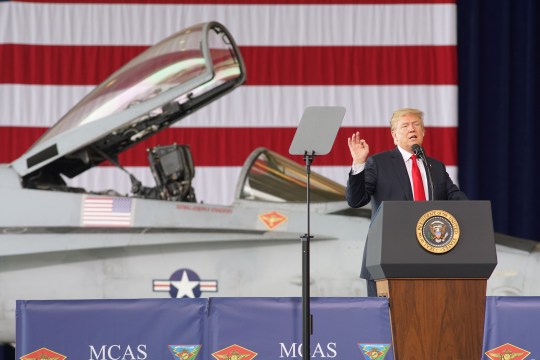
Ejection seat: There's no pilot on this space mission (Sandy Huffaker; Getty Images)
History has no record of the first drafts of the speeches President Kennedy delivered in 1961 and 1962, when he set America on a path to space. Still, it’s a safe bet they didn’t include the lines: “Space is a warfighting domain. We may have a Space Force. Develop another one. Space Force.”
He also probably didn’t consider saying, “You see what’s happening? You see the rockets going up left and right… Very soon we are going to the moon.” And he almost surely didn’t think about saying, “You wouldn’t have been going to the moon if my opponent won, that I can tell you. ”
President Kennedy, however, wasn’t President Trump, and the current President said precisely those things in a speech at the Marine Corps Air Station in Miramar, Calif., on March 13 — only instead of the moon, he promised Mars.
Still, let’s unpack Trump’s various ideas, starting with the Space Force. There are a lot of things wrong with this proposal, not the least being that it may violate international agreements. More than half a century ago, the U.S. and the Soviet Union became principal signatories on what is formally known as “The Treaty on Principles Governing the Activities of States in the Exploration and Use of Outer Space, Including the Moon and Other Celestial Bodies.” That mouthful name has been colloquially shortened to The Outer Space Treaty, but whatever it’s called, one of its foundational rules is no fighting in space.
Article IV of the treaty explicitly forbids nuclear or other weapons of mass destruction anywhere in space, as well as any military activity of any kind on the moon or other worlds.
Even if Trump kept the space weaponry conventional, there’s a risk of nuclear escalation back on Earth. In 1983, President Reagan proposed his Strategic Defense Initiative (SDI), an array of non-nuclear, space-based defensive weapons to protect the U.S. from a first-strike attack by the Soviet Union. Moscow, however, saw a good defense as at least a prelude to offense and warned that the SDI violated the existing Anti-Ballistic Missile (ABM) pact and Strategic Arms Limitation Treaty (SALT) — both of which regulated nukes. Tear up ABM and SALT, and you’re off to the arms races.
Ultimately, it didn’t matter because none of the planned technology — x-ray lasers, sub-atomic particle beams, electromagnetic rail guns — worked. Ten years and $30 billion later, President Bill Clinton quietly pulled the plug on the plan.
Star Wars was not the first time the U.S. considered militarizing space. The idea initially got traction in 1963, when the Air Force announced its plans for a Manned Orbiting Laboratory, which was actually not a laboratory at all, but instead a single-module space station for astronaut-spies. That project too had its run, burned through $1.5 billion in 1960s dollars, and was scrapped in 1969. And that one too never worked out its engineering bugs, except for the toilets — really — which later flew on the Skylab space station.
This time, even the military isn’t buying what Trump is selling. In July of last year, when Congress actually considered funding a space force, Defense Secretary Jim Mattis shot it down. “At a time when we are trying to integrate the Department’s joint war-fighting functions, I do not wish to add a separate service that would likely present a narrower and even parochial approach to space operations,” he wrote in a letter to a Congressional Republican who also opposed the idea. Mattis appears no more favorably inclined today, and the chilly silence you heard from the Pentagon following Trump’s speech shows that.
Still, there’s Mars, right? We’re going there very soon, right? No. No, we’re not.
Ever since the first moon landing, in 1969, the rule for Mars has always been that we’re going there, we just never actually get there. First, the target date was 1975, then 2019 — chosen because it will be the fiftieth anniversary of that moon landing. Now it’s 2035 or so. Elon Musk, the head of SpaceX, has claimed he could get there by 2024.
It’s Musk’s accomplishments that seem to be behind Trump’s current Red Planet Fever. At a March 8 cabinet meeting, the President was still swooning over the Feb. 6 launch of SpaceX’s Falcon Heavy rocket — particularly the safe landing of two of its three spent boosters. (The third one crashed.) But Musk himself has walked back his 2024 promise and gotten a good deal more realistic about the challenges a Mars mission poses. “It’s difficult, dangerous, [and there is a] good chance you will die,” he said at a South by Southwest talk on March 11.
Trump has much more control over NASA’s own Mars push, but he’s not really exercising it. NASA’s annual budget comes in just north of $19 billion, which represents about 0.4% of the federal budget. Back in the Apollo days, it was 4%. That lean funding has meant go-slow progress on the principal hardware needed for a Mars mission — the Orion spacecraft and the heavy-lift SLS rocket — both of which have been in development since 2004. The earliest launch of even an uncrewed test version will not likely occur until 2020. If Trump wants to speed things up, he could work with Congress to open the money spigot much wider. He hasn’t.
Finally, there is the matter of Trump’s swipe at Hillary Clinton, in which he suggested that she was indifferent to a Mars mission. But as is often the case, Trump seems to have made this up on the fly. In an online science debateduring the election in which the presidential candidates submitted written answers to questions, Clinton wrote: “Today, thanks to a series of successful American robotic explorers, we know more about the Red Planet than ever before. A goal of my administration will be to expand this knowledge even further and advance our ability to make human exploration of Mars a reality.” She restated that commitment in a similar forum with Space News magazine.
Trump did not mention Mars on either occasion, but he did write that a strong STEM program in schools will help “bring millions of jobs and trillions of dollars in investment to this country.” There was no real-time moderator to press him on the “trillions.”
The current president may or may not be learning an immutable truth that previous presidents have learned, which is that it’s extremely easy to get drunk on space, but it’s extremely hard to turn that intoxication into a working national space policy. The job takes discipline, vision, patience, an ability to work closely with Congress and a real understanding of the relevant science. A few of those previous presidents exhibited those qualities. If the current one wants to get anywhere near Mars, he will have to do the same.
0 notes
Text

"This 'Christmas tree' was created by the three crewmen of the third manned Skylab mission (Skylab 4) aboard the space station in Earth orbit. Food cans were used to fashion the tree. This photograph was made from a television transmission made from a video tape recording on Dec. 24, 1973."
Date: December 24, 1973
NASA ID: S73-38687
#Skylab#Space Station#Skylab IV#Skylab 4#SL-4#SLM-3#CSM-118#NASA#Apollo Program#Apollo Applications Program#Christmas#Christmas tree#December#1973#space#my post
108 notes
·
View notes
Photo
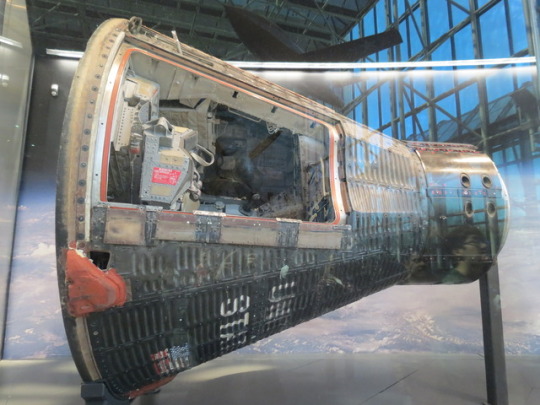
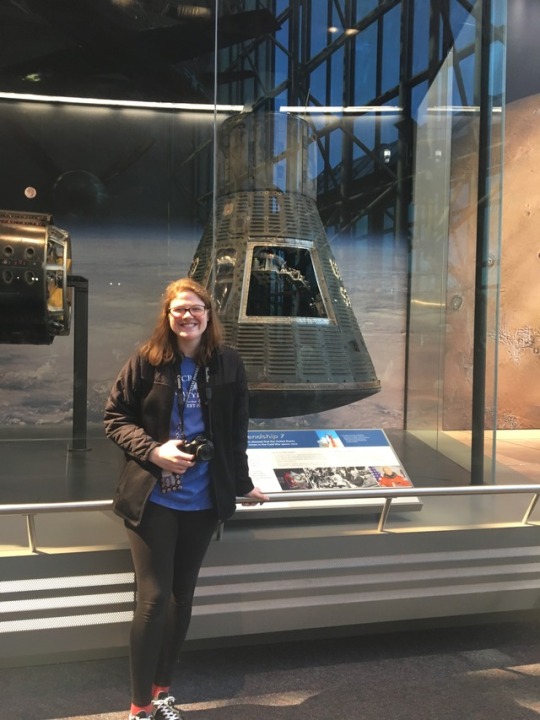

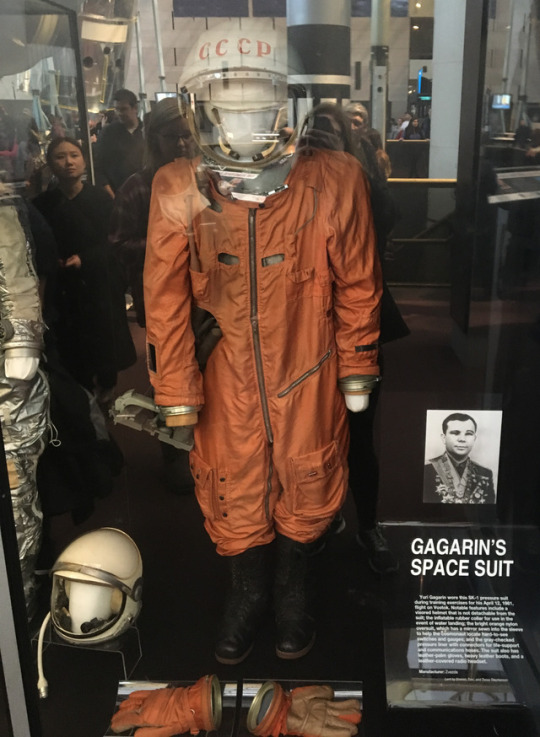
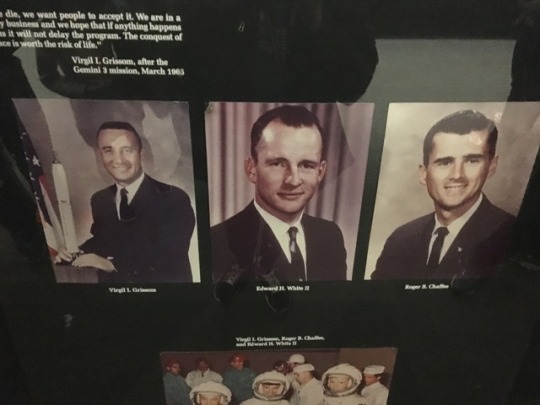




Air and Space Museum!! Seeing the Gemini IV and Friendship 7 capsules was my favorite part, I knew they were small but I didn’t realize just HOW small they were. They had a bunch of great suits on display (Glenn’s, Gagarin’s, Buzz Aldrin’s, David Scott’s, etc) and a neat little exhibit on Sally Ride. In the Apollo exhibit there was a small memorial to the crew of Apollo 1, which was really nice to see. And all the models were SO neat, especially the Apollo-Soyuz display and the Skylab
#the whole time I was looking @ the capsules#I was thinking 'no wonder Gus was such a good astronaut'#he was probably the only one short enough to feel comfortable in those tin cans lmao#SO small#air and space museum#NASA#gemini iv#friendship 7#john glenn#yuri gagarin#apollo 1#sally ride#astronauts#hubble#apollo-soyuz#mine#*
38 notes
·
View notes
Photo

Courtesy of Swann
Group of 22 large-format photographs from various NASA missions, including scenes of astronauts floating in space and multiple topographic views of the Earth. With breathtaking iconic images of astronauts Bruce McCandless, Buzz Aldrin, Charles Duke, and Ed White as they traversed through space, taken during Gemini IV, Apollo 11, Skylab 3, and STS-41-B (a Space Shuttle Challenger mission), among others, as well as an array of painterly and abstract topographical views of the Earth, as witnessed from beyond its atmosphere. Ilfochrome prints, the images ranging in size from 19-1/2x19-1/2 to 20x24 inches (49.5x49.5 to 50.8x61 cm), and the reverse, many with numeric notations, in pencil and ink.
From: SWANN AUCTION GALLERIES IS AUCTIONING SOME ICONIC PHOTOGRAPHY ON EBAY
35 notes
·
View notes
Text
阿波羅探月:人類太空探索史的重要里程碑
1969年3月7日,阿波羅9號飛船從地球軌道上拍攝的尼羅河和埃及照片。
阿波羅計劃一開始是美國針對前蘇聯,在技術、經濟和政治上展示國家競爭優勢,當美國比前蘇聯“捷足先登”月球時,實現了這些領域的目標,但是阿波羅計劃的一部分,是致力於探索科學研究,阿波羅計劃教會了我們許多知識,不僅僅局限於月球。
1974年,藝術家羅伯特•麥考爾(Robert McCall)描繪了美國和前蘇聯宇宙飛船空中對接的情景。
有趣的是,阿波羅號項目研究最早受益者是地球科學家。停留在地球軌道的阿波羅7號和9號飛船,對地球不同波長光線進行了拍攝,突出了地面上可能觀察不到的事物變化,例如:生長狀況不佳的樹木和農作物,項研究對於美國宇航局“陸地衛星計劃”具有指導意義,該計劃從太空角度對地球資源研究45年以上。
阿波羅號飛船的硬件裝置用於建造“天空實驗室(Skylab)”,這是美國首個太空站,天空實驗室自身是阿波羅土星IV-B號火箭上階,它的發射是最後一次使用強大的阿波羅土星V號火箭助推器,當進入建造航天飛機的時代,美國宇航局工程師們利用他們在阿波羅計劃中學到的知識,使航天飛機基本結構更加堅固和安全,同時有效地減輕了航天飛機重量。
阿波羅16號宇航員從月球高地採集的44億年前的斜長岩樣本。
阿波羅號宇航員從月球表面採集了各種各樣的岩石樣本,總重量超過了360公斤,其中包括隕石碰撞月球形成的大量天然晶體,其中一些晶體的歷史可追溯至40億年前,由於月球上缺少水和大氣,才使得這些晶體完整地保存下來,便於科學家們更加深入地研究太陽系早期。
科學家對斜長岩的最新發現表明,月球早期地質環境非常複雜,並不像巴茲·奧爾德林所描述的“壯觀的荒涼”,也許最重要的發現來自於月球和地球岩石成分相似性比較,然後關注特定物質數量的差異性,最終,這將證實一種理論,即45億年前地球與一顆火星大小的星球發生碰撞,從地球上剝離的碎片物質形成月球。
圖中是阿波羅7號飛船的IV-B號火箭上階,該飛船已發射到達地球軌道。
阿波羅號太空飛行於1972年終結,但是這項太空研究帶給我們的知識仍在被應用著,美國宇航局每年收到大約60份月球樣本研究請求,平均每年有525份樣本進行分析,一項調查表明,截至2015年,使用阿波羅號數據發表的科學論文超過2500篇。
圖中是從發現號航天飛機觀測的國際空間站,當時這兩個航天器開始相對分離。
事實上,阿波羅號探月任務的“遺產”遠遠超出了科學範疇,阿波羅探月遺產已成為人類太空探索的寶貴遺產,一直延續使用到今天。 (葉傾城)
.(tagsToTranslate)科學探索(t)阿波羅探月:人類太空探索史的重要里程碑(t)kknews.xyz
from 阿波羅探月:人類太空探索史的重要里程碑
via KKNEWS
0 notes
Text
NASA wristwatches
Wristwatches space-flown on NASA missions
Mercury program
1962 MA-6 Friendship-7
John Glenn wore a Heuer 2915 stopwatch strapped on his right forearm ®
1962 MA-7 Aurora-7
Scott Carpenter wore a Breitling Navitimer Cosmonaute chronograph with 24 hours dial at left wrist (L)
1962 MA-8 Sigma-7
Walter Schirra wore his personal Omega Speedmaster CK2998-4 on his left wrist (L)
1963 MA-9 Faith-7
Gordon Cooper wore his personal Omega Speedmaster CK2998-4 on left (L) & his Accutron Astronaut watch at right wrist ®
Gemini program
1965 Gemini III
Gus Grissom L= Speedmaster R= Accutron Astronaut
John Young L= Accutron Astronaut R= Speedmaster
1965 Gemini IV
Ed White L= two Speedmaster 105.003-64
Jim McDivitt L= Speedmaster + R= Speedmaster
1965 Gemini V
Gordon Cooper L= Speedmaster + R = Accutron Astronaut
Pete Conrad L= Speedmaster + R= Speedmaster & Glycine Airman
1965 Gemini VII
Frank Borman L= Speedmaster
James Lovell R= Speedmaster
1965 Gemini VI
Walter Schirra L= Speedmaster
Tom Stafford L= Speedmaster R= Speedmaster
1966 Gemini VIII
Neil Armstrong L= Speedmaster + R= Longines Wittnauer Weems
David Scott L= Speedmaster
1966 Gemini IX
Tom Stafford L= Speedmaster
Eugene Cernan L= Speedmaster
1966 Gemini X
John Young L= Speedmaster
Michael Collins none ? ( R= Speedmaster underneath spacesuit )
1966 Gemini XI
Pete Conrad L= Speedmaster + R= Glycine Airman
Richard Gordon R= Speedmaster
1966 Gemini XII
James Lovell R= Speedmaster
Edwin Aldrin R= Speedmaster
Apollo program
1967 Apollo 1
Gus Grissom , Edward White , Roger Chaffee L= Speedmaster
1968 Apollo 7
Walter Schirra L= Speedmaster
Donn Eisele L= Speedmaster R= Speedmaster
Walter Cunningham L= Speedmaster
1968 Apollo 8
Frank Borman L= Speedmaster
James Lovell R= Speedmaster
William Anders L= Speedmaster
1969 Apollo 9
Jim McDivitt , David Scott , Russell Schweickaert L= Speedmaster
1969 Apollo 10
Tom Stafford L= Speedmaster
John Young L= Speedmaster ( L underneath spacesuit Speedmaster on JB Champion )
Eugene Cernan L= Speedmaster ( L underneath spacesuit Speedmaster on JB Champion )
1969 Apollo 11
Neil Armstrong R= Speedmaster
Edwin Aldrin L= Speedmaster
Michael Collins R = Speedmaster
1969 Apollo 12
Pete Conrad L= Speedmaster
Alan Bean L= Speedmaster
Richard Gordon L= Speedmaster ( R underneath spacesuit Speedmaster on JB Champion )
1970 Apollo 13
James Lovell R= Speedmaster
Fred Haise L= Speedmaster
Jack Swigert L= Speedmaster ( L underneath spacesuit Rolex GMT-master 1675 Pepsi )
1971 Apollo 14
Alan Shepard L= Speedmaster
Edgar Mitchell L= Speedmaster ( L + R underneath spacesuit Rolex GMT-master 1675 + 1675/3 )
Stu Roosa L= Speedmaster ( L underneath spacesuit Rolex GMT-master 1675 Pepsi )
1971 Apollo 15
David Scott L= Speedmaster ( PPK contained Bulova 88510 chronograph worn on the Moon )
James Irwin L = Speedmaster
Alfred Worden L= Speedmaster
1972 Apollo 16
John Young L= Speedmaster
Charles Duke L= Speedmaster ( L underneath spacesuit Speedmaster )
Thomas Mattingly L= Speedmaster
1972 Apollo 17
Eugene Cernan L= Speedmaster ( L underneath spacesuit Speedmaster on JB Champion
Harrison Schmitt L= Speedmaster
Ron Evans L= Speedmaster ( L underneath spacesuit personal Speedmaster 145.022 ) ( PPK contained Rolex GMT-master Pepsi 1675 carried to the Moon )
Skylab program
1973 Skylab-2
Pete Conrad, Joseph Kerwin, Paul Weitz L= Speedmaster
1973 Skylab-3
Alan Bean L= Speedmaster
Owen Garriott L= Speedmaster
( PPK contained Seiko wristwatches )
Jack Lousma L= Speedmaster ( L underneath spacesuit 2nd Speedmaster )
1973 Skylab-4
Gerald Carr L= Speedmaster
Edward Gibson L= Speedmaster( L underneath spacesuit 2nd Speedmaster )
William Pogue L= Speedmaster
L underneath spacesuit Seiko 6139-6005 first automatic chronograph in space
Apollo-Soyuz Test Project
1975 ASTP
Thomas Stafford R= Speedmaster ( L underneath spacesuit 2nd Speedmaster)
Deke Slayton L= Speedmaster ( L underneath spacesuit 2nd Speedmaster)
Vance Brand L= Speedmaster ( L underneath spacesuit 2nd Speedmaster)
Alexei Leonov L= Speedmaster ( L underneath spacesuit 2nd Speedmaster) + 3rd Speedy
Valeri Kubasov L= Speedmaster ( L underneath spacesuit 2nd Speedmaster)
#Astronauts#NASA#OmegaWatches#RolexWatches#Accutron#Bulova#Seiko#montres#aviation#spaceflight#collectSpace#OmegaMuseum#RolexGMT#aviator#USAF#Navy#KSC#pilotwatch#testpilot#wristwatch#military#officer#gentleman#TheRightStuff#Moonwatch#MoonwatchOnly#RolexMagazine#MoonwatchUniverse#Speedmaster#chronograph
8 notes
·
View notes
Text
60 Years Of NASA History
Watch Video
President Dwight D. Eisenhower established the National Aeronautics and Space Administration in 1958. Back then people went to the movies to see South Pacific, High School Confidential, and Cat on a Hot Tin Roof. Elizabeth Taylor was the queen of the celebrity world. A postage stamp cost 4 cents, and the Bank of America launched the first credit card with extended credit.
NASA from the beginning was meant to be civilian orientation rather than a military orientation. Most U.S. space explorations have been led by NASA, including the Apollo Moon landing missions, the Skylab space station, and later the Space Shuttle. NASA shares data with various national and international organizations.
Brief Timeline:
1950s – Abe Silverstein becomes manager of the lab’s research activities. He helps the United States explore high energy rocket propellants and nuclear propulsion. The launch of Sputnik in the fall of 1957 led to an almost complete redirection into space-related studies.
1955 – Neil Armstrong begins his career at Lewis as a NACA test pilot.
1958 – NASA officially begins operations on October 1 and the AERL becomes Lewis Research Center.
1960s – The center contributes to space program with a series of tests for Project Mercury, an intensive study into the storage and handling of liquid hydrogen. By the late 1960s, the center was again shifting back toward aeronautics.
1969 – On July 20, Apollo 11 lands on the moon. Astronaut Neil Armstrong is the first human to step on the moon.
1973 – The Nuclear Research Reactor Facility is closed.
1986 – Space Shuttle Challenger disaster. Five astronauts and two payload specialists died.
1990 — Hubble telescope deployed.
1997 – Mars Pathfinder lands on the Martian surface with Lewis experiments on July 4. Titan IV-Centaur launches the Cassini spacecraft toward Saturn on October 15.
2011 – Curiosity spacecraft launched to Mars.
from FOX 4 Kansas City WDAF-TV | News, Weather, Sports https://fox4kc.com/2018/07/28/60-years-of-nasa-history/
from Kansas City Happenings https://kansascityhappenings.wordpress.com/2018/07/28/60-years-of-nasa-history/
0 notes